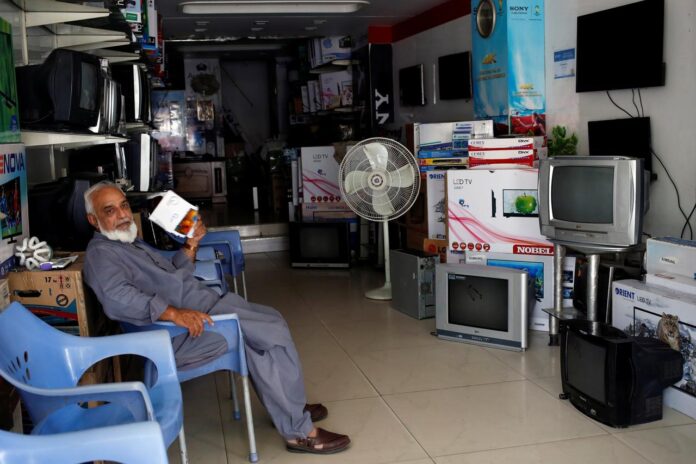ISLAMABAD: Electricity consumers nationwide are experiencing eight- to 12-hour-long shortages in the scorching heat as the gap between the demand and supply surged to 5,000 megawatts, reports citing sources said.
The shortfall reared its head as temperatures rose to 47 and 48 degrees Celsius in parts of Sindh and south Punjab, while major load centres such as Lahore, Karachi and the areas around Rawalpindi and Islamabad witnessed highs of 42, 33 and 41 degrees Celsius, respectively.
The people in the power division said that 4,000 megawatts was being generated through hydropower producers, while thermal plants were generating 3,000 megawatts.
The total production of electricity stood at 19,000 megawatts while the demand rose to 24,000 megawatts, a shortfall of 5,000 megawatts.
However, in a tweet, the Ministry of Energy put the number at 1,500 megawatts.
تربیلا اور منگلا سے اس وقت 3300میگاواٹ کی کم بجلی پیدا ہورہی ہے جوکہ کچھ دنوں میں بحال ہو جائے گی اس وقت ملک کی کل بجلی کی ڈیمانڈ 24100میگاواٹ جبکہ سسٹم میں موجود بجلی کی پیداوار 22600میگاواٹ ہے شارٹ فال 1500میگاواٹ ہے بجلی صارفین سے بجلی استعمال میں اعتدال کی گزارش ہے اور
— Ministry of Energy (@MoWP15) June 9, 2021
The sources said the power distribution companies’ system is overburdened, adding that 80 percent of transformers were overloaded.
They said that with the rise in demand, feeders kept tripping. Instructions had been given to the power distribution companies to improve their transmission system, the sources said.
Interestingly, in February, the government declared its electricity generating capacity has exceeded the need.
“It’s true. We are producing much more than we need,” Special Assistant to Prime Minister on Power Tabish Gauhar told Reuters.
Large-scale construction of new power plants — largely coal-fired ones funded by China — has dramatically boosted the country’s energy capacity, the officials announced.
When electricity projects now in the pipeline are completed in the next few years, we will have about 38,000 megawatts of capacity, Gauhar said.
But its current summertime peak demand is 25,000 megawatts, with electricity use falling to 12,000 megawatts in the winter, he said.
Analysts say that while the country may succeed in significantly boosting generation, there are question marks about how well the ancient transmission systems will cope with this new influx of energy.
The government also plans to invest in several high-voltage electricity lines but it will take more than two years for them to come online.
The government has put a temporary moratorium on awarding contracts for new liquefied natural gas plants and imported coal and is, instead, focused on developing hydro and indigenous coal energy plants.























